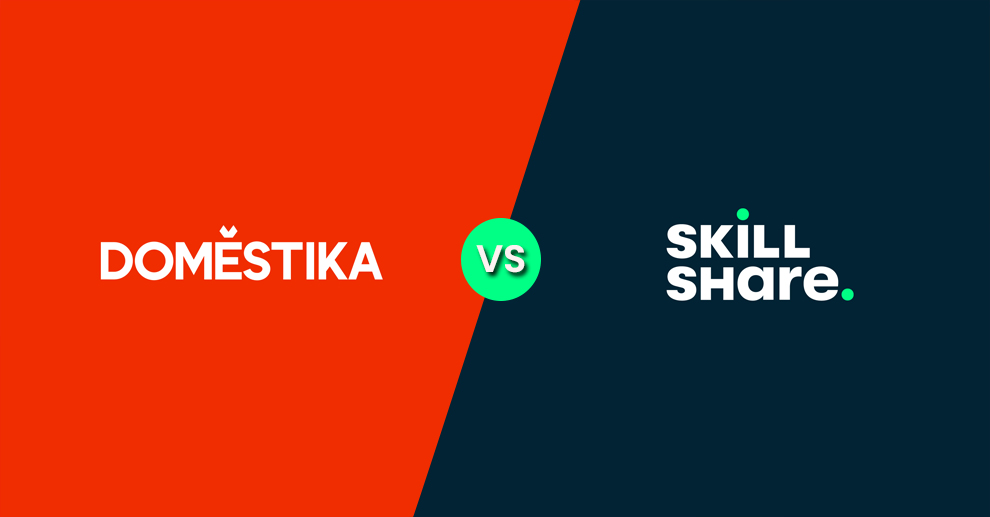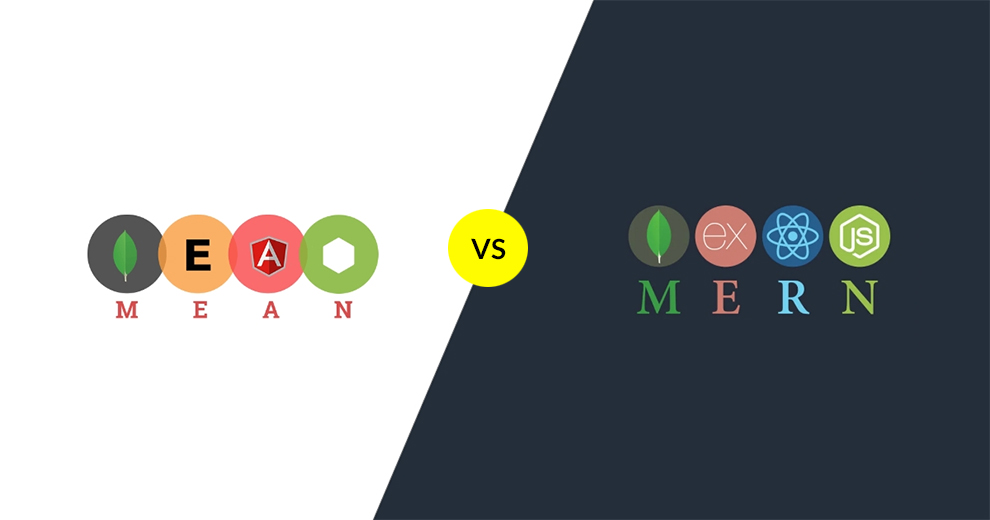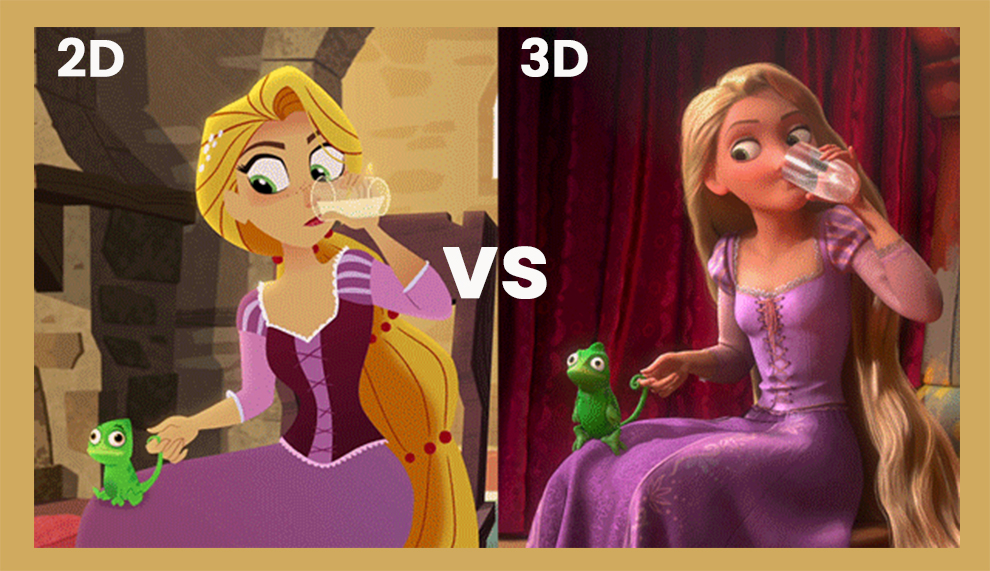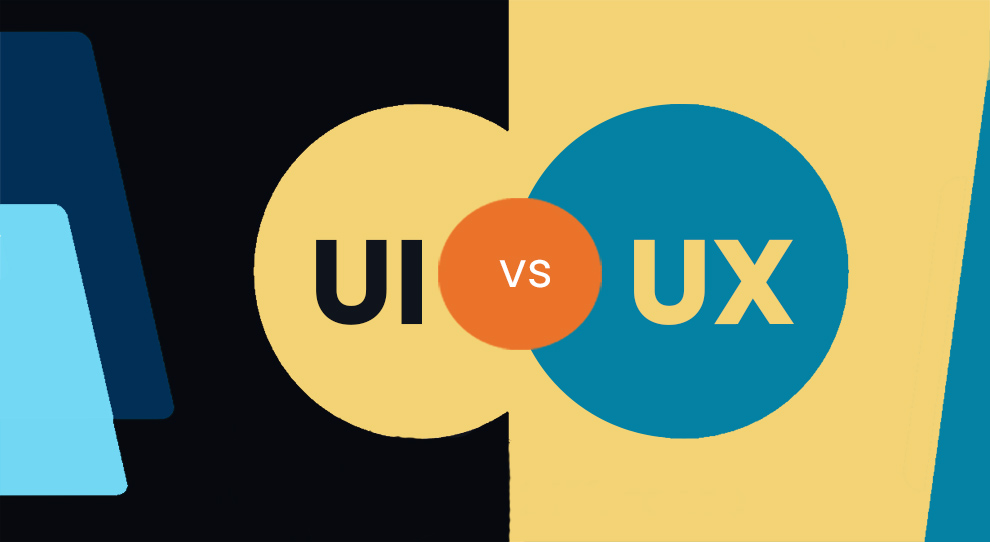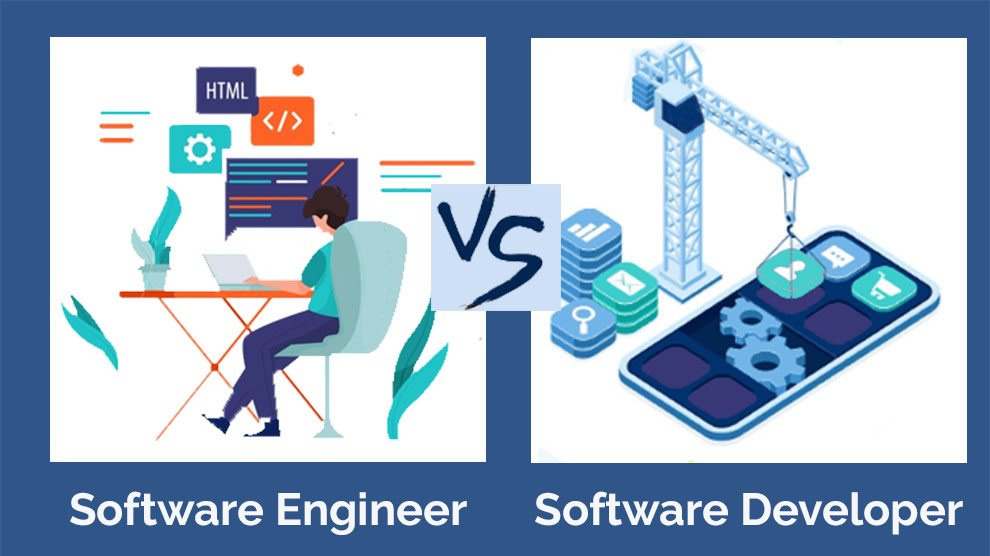While Skillshare has more variety in courses, not all of them are worth it. Some of them are just very short tutorials and not as detailed as needed. On the other hand, Domestika has professional level classes but teaching language could be a barrier for many.
Not many e-learning platforms cater to creative professionals. Two popular names that every self-learning artist must be aware of are Skillshare and Domestika. If you are spoilt for choice between Domestika or Skillshare, we will help you choose one.
While Skillshare is a likable choice if you wish to explore new skills and hobbies via shorter, tutorial-like classes, go for Domestika if you desire detailed, structured classes.
But, somehow, even with their short lessons, Skillshare turns out to be better. This is because they cover not just one particular type of creative topic, they go from teaching music to knitting, crocheting to cooking, and whatnot. You can also find other subject areas like tech and business on Skillshare.
Skillshare premium subscription can seem a little pricey at face value, but the upside is you get access to thousands of courses.
But, yes, not all courses they offer will add much value because Skillshare does not have a refined system to get instructors on board.
With Domestika courses, please check the audio language before enrolling. If you are open to reading the subtitles, then it is fine. But if you want courses only in English audio, the options are limited.
Skillshare vs Domestika, Which Is Better?
Skillshare is better prepared to address the needs of all kinds of learners. Whereas, Domestika caters to particular artistic subjects only.
| Attributes | Skillshare | Domestika |
| Subscription plan | Subscription fee ($168 per year) | $100 a year. Courses purchased individually ($10-$40) |
| Free | Several classes are available for free | Very few free options |
| Trial | One month | None |
| Accreditation | No | No |
| Refund | Within the first 7 days of signing up | Within the first 14 days of purchasing a course |
| Popularity | Skillshare is more well-known in the United States. | Domestika is more popular in Latin America and Europe. |
| Course Variety | Over 30,000 courses | Around 1,000 courses |
| Course length | 30 minutes to 3 hours in length, with some courses being longer or shorter than that range | 2 to 20 hours in length, with some courses being longer or shorter than that range |
| Lesson language | Primarily in English, with a smaller selection of courses in other languages | Primarily in Spanish and Portuguese, with a smaller selection of courses in English |
| Certification | Yes | Yes |
| Mobile app | Available for both iOS and Android devices | Available for both iOS and Android devices |
| Visit | Skillshare | Domestika |
Before we help you pick either Domestika or Skillshare, let us give you a brief overview of the pros and cons of these platforms.
Is Paying For Skillshare Worth It?
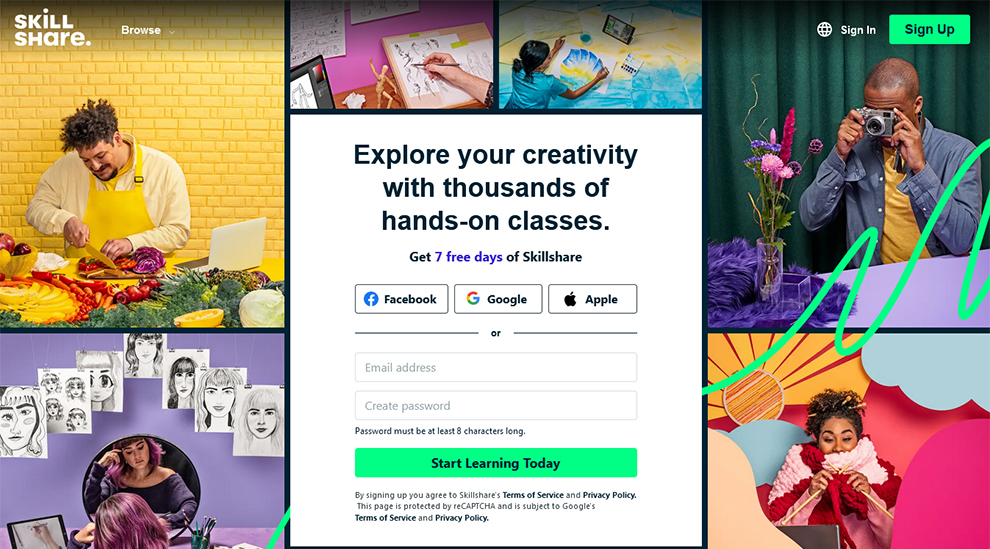
Yes, paying for Skillshare classes is worth it because once you pay for their premium subscription, you get access to 1000s of courses at once.
You can take their free trial to test the waters and decide if you wish to pay for the entire subscription.
With Skillshare’s subscription model, you get the following benefits.
- Access to a host of courses. So, you have a variety of lessons for different skill levels.
- Their short course feature could be an advantage for many learners who do not want to bore themselves with long lectures.
- Self-paced courses, meaning you can progress at your time and schedule.
- Community features like project galleries, discussion forums, and peer feedback allow the learners to connect with other learners and get feedback on their work.
Skillshare Pros and Cons
| Pros | Cons |
|
|
Are Domestika Courses Worth It?
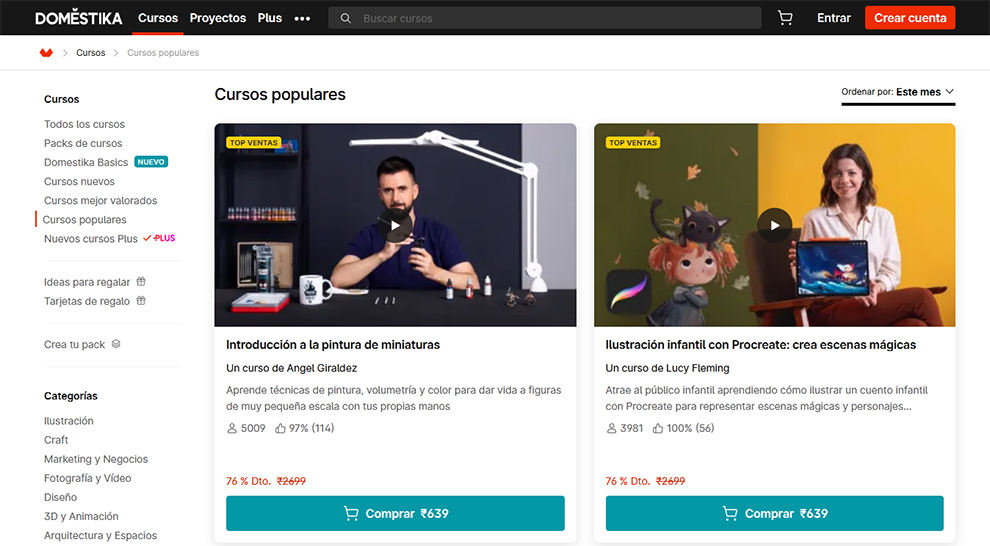
Yes, taking up a Domestika course is worth it. The best thing about Domestika is that if you are a Domestika Plus member, you get to keep their courses forever even if you cancel your subscription.
You can find a myriad of courses in creative fields like photography, illustration, design, and animation.
Each of their sessions is hands-on and practical, focusing on enabling the learners to develop specific techniques and skills. Most of their courses are well-regarded and have garnered positive reviews from the learners.
Domestika Pros and Cons
| Pros | Cons |
|
|
A. Are Domestika courses legit?
Yes, courses from Domestika are legitimate. It is a leading online learning platform with a plethora of courses from industry experts and professionals in creative fields like illustration, design, animation, and photography.
They have been around since 2010 and have built a reputation for offering top-quality courses for creative enthusiasts and professionals. Their lessons are hands-on and practical, helping learners develop specific techniques and skills.
The platform is transparent about its refund policies, pricing, and offerings leaving learners more confident about their investment. Overall, it is an excellent resource for learners interested in developing skills in the creative fields.
B. Do you keep Domestika courses forever?
Yes! Once you buy the Domestika courses, you will have lifetime access to their content. It implies you can view their course material and videos at any time, even after viewing them once.
It is one of the significant advantages of Domestika courses as it lets the learners revisit the material and refresh their skills. Further, the learners can work through the course content at their own pace, taking as much time to absorb and complete the sessions.
However, please note that lifetime access applies to the content, not the additional resources or the community features available during the course.
C. Is Domestika expensive?
Domestika is not very cheap but it cannot be called expensive either.
Their sessions typically range between $10 to $90. it is worth it as the prices are inclusive of the certificate cost. You will learn with top industry experts and professionals from the creative fields.
Sometimes you can get their courses at a cheaper rate as well because of on-going promotional schemes, which can help you save some money. You can also shop for classes as a package or a bundle deal to save more.
Thus, their classes are a worthwhile investment for learners who aspire to develop skills in the creative fields.
Domestika Vs Skillshare – Which One Wins?
So far Skillshare has the edge. Now, let us pit them against each other on multiple attributes to help you choose between Skillshare and Domestika.
A. Pricing, subscription, and refund
Domestika’s yearly subscription is cheaper than Skillshare. With Domestika, you can also shop for individual courses. Sadly, Domestika does not offer a trial period.
However, when it comes to refunds, Skillshare’s money-back guarantee is more generous, and its cancellation policy is flexible.
Whether you pick Skillshare or Domestika, you get both paid and free classes. Skillshare’s monthly subscription costs $32. Their annual subscription turns out to be cheaper at $168.
Skillshare provides a seven-day free trial for its new premium customers. Premium buyers have unlimited access to all the courses. They can download the class material and enjoy offline viewing on the go.
Users can cancel their subscriptions as they like, but that does not rob their access to the premium content until the end of the billing cycle. The company provides a generous 30-day money-back guarantee for the premium subscription. So, if you do not like what you get, you can get a refund.
Like Skillshare, even Domestika has both paid and free courses. Their pro membership starts at $40 yearly. Alternatively, you can opt for monthly plans costing $3.40 per month.
With Domestika, you get individual course purchases, but the prices vary depending on your chosen course. You get unlimited access to all lessons when you buy Domestika’s Pro membership.
So you can download them and enjoy them offline. They also let you cancel your subscription at your convenience, but unlike Skillshare, your membership ends instantly in that case.
Domestika has a 14-day money-back guarantee for Pro subscribers. So, if you are unhappy with the subscription, you can seek a refund.
B. Skillshare vs Domestika Language compatibility
Since English is the most widely spoken language in the world, Skillshare has an advantage here. It is because most of its courses are available in English with subtitles in other languages.
The majority of the Skillshare courses are in English with subtitles in English, Spanish, French, German, and Portuguese. As Skillshare is trying to expand its reach to the non-English speaking audience as well, you can find some courses in French, German, Portuguese, and Spanish too.
On the contrary, in Domestika, you will find courses in Spanish, English, Portuguese, German, Italian, Polish, Dutch and French.
To know whether the course selected by you is available in your preferred language audio and subtitle, do check the ‘Audio and cc’ option on course page.
C. Course variety
You have a better chance of finding your preferred lesson on Skillshare because comparing Skillshare or Domestika, the former covers a wider variety of topics.
Skillshare offers more than 30,000 courses, varying from business, to technology, design, writing, and photography, among others.
Beyond this, Skillshare provides curated learning paths or a combination of lessons on a specific skill or topic.
With Domestika, you get more than 1000 courses across creative topics like animation, illustration, design, and photography, among others.
Beyond this, Domestika also provides a curated collection of classes comprising courses designed to be taken together to get proficient at a skill.
D. Domestika vs Skillshare course structure & length
Domestika has longer courses that are more comprehensive than Skillshare. Skillshare most of the time offers bite-sized lessons that appear to be like short tutorials.
Broadly, both Domestika and Skillshare provide courses in varying lengths and structures, depending on the instructor and the topic. Skillshare mostly breaks down the lessons into bite-sized, smaller videos, rangings from a few minutes to an hour in length.
Their courses comprise assignments and projects that help the learners apply what they have learned. You can find some Skillshare courses structured as learning paths or series that are a compilation of courses designed to be taken together to develop a skill set.
To pick one, Skillshare or Domestika, Domestika provides relatively longer courses that go from a few hours to over 30 hours in length. They also have hands-on projects to help you apply what you learn, and like Skillshare, you will find some courses structured as series where a couple of classes are clubbed together to help you get adept at a skill.
E. Certification Domestika vs Skillshare
Domestika and Skillshare offer a certificate of completion for some of their courses.
You can get a completion certification with both platforms. These are shareable certificates. So, you can download and include them in your CV or share it on your social media.
You must complete the course project and get positive peer feedback for the Skillshare certification. Domestika certification requires you to complete all the projects and the lessons included in the course.
F. Instructors: who can teach on Domestika or Skillshare?
Domestika handpicks their experts basis their expertise and experience, but Skillshare lets anyone teach on the platform.
However, Skillshare offers more extensive support and resources for the instructors to create a course on their platform.
So, Skillshare also has experts from their respective fields offering courses, but broadly anyone can decide to teach on Skillshare.
The platform allows the instructors to publish and create their lessons, and instructors earn based on the number of students who enroll in their courses.
But Skillshare provides the support and resources to the instructors to offer top-quality courses comprising promotional tools, best practices, and production resources.
On Domestika, instructors undergo a rigorous selection process to be an instructor on Domestika. Experts and professionals from their respective fields offer the courses.
They have to submit a demo video and a proposal for the course. Domestika also supports its instructors across the course creation process, including the pre-production, production, and post-production stages but it is not extensive as Skillshare.
G. Domestika vs Skillshare mobile app
Domestika and Skillshare have mobile applications for iOS and Android devices that let the learners access the courses and the material on the go.
Skillshare and Domestika have apps for Android and iOS devices. The learners can access all the learning material and courses on mobile devices. The apps support offline viewing.
Hence, the learners can download the videos and view them later when they are in no internet zone, like metros. Skillshare lets learners submit or create course projects from the app, whereas Domestika lets learners download course resources like reference materials and project files.
Both offer mobile apps, but Domestika has an added feature of downloading course resources like reference material and project files. It can benefit students who wish to access them offline. Other than that, the apps do not have much difference, and they serve the purpose.
Related: Skillshare vs LinkedIn Learning | Skillshare vs CreativeLive |
Final Verdict: Skillshare Vs Domestika, Which Is Better?
It would be unfair for us to pick one over the other as the choice ultimately depends on your learning preferences and goals.
You should opt for Skillshare if:
- You need an extensive selection of courses in creative subjects, technology, or business.
- You like a larger community of instructors and learners for greater networking collaboration.
- You desire assistance and resources to build top-quality courses and publish them on the platform.
- You are ok to work hard and receive a certification after bagging positive feedback from your peers.
- You like a more flexible subscription model with unlimited access to all lessons.
You should opt for Domestika if:
- You need more in-depth courses in creative fields like photography, illustration, and design.
- You desire a certificate of completion after completing the course and projects.
- You want to pay per course.
- You want a more standardized learning experience.
- You appreciate a personalized experience, as every Domestika class has a dedicated forum where learners can get feedback and ask questions.
Bottom Line – Between Domestika vs Skillshare both are top-notch platforms for online learning. You should go with Skillshare if you need more variety across different subjects, a larger community of instructors and learners, and a flexible subscription model.
On the contrary, Domestika is a better choice if you like a pay-per-course model and desire a personalized, standardized learning experience.

